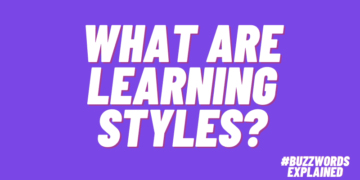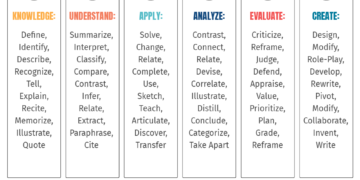Unleashing Email Sequences For Your Online Course
For an online course creator, educating and inspiring others is essential. But you can’t inspire and educate if no one knows your online course exists in the first place. This is where an email sequence can help you.
An email sequence is one of the most popular ways to promote content. You can build deep and lasting relationships with your audience by sending a carefully planned series of emails. In this article, you’ll learn four essential pre-sales and sales email sequences you can use to promote your new online course.
4 Essential Pre-Sales And Sales Email Sequences
1. Welcome Email Sequence
This is the initial email that people who signed up for your email list or downloaded your app receive. You send this email to, well, welcome students for joining the community.
A welcome email sequence usually consists of three to five emails. In your first email, you don’t only welcome your new subscribers and users, you can also give them an incentive (a freebie) for joining the community. This can help enhance conversion rates and revenues. When your email recipients or users receive some form of reward for signing up for your email list or downloading your app, they are more likely to spread the word about it. That increases your chances of getting more sign-ups and potential customers. Who doesn’t want a freebie, after all?
After welcoming your new subscriber or user, you can introduce your brand in your second email, sent two days after they signed up. So, tell them your story. Tell them what you’ve done to help other people. Emphasize, too, how you can address their pain points. In your third email, you can tell them what to expect if they sign up for your course [1]. Give them an overview of what they can learn as students. Ensure you highlight critical sections of the syllabus.
Also, share any supporting materials to help them succeed if they start your course in subsequent emails. You might want to include links to other articles or videos, for example [2]. It’s also a good idea to offer exclusive discounts to students who decide to enroll. This email can also give students strategies they can use to facilitate their learning experience once they sign up for the course.
Finally, ensure a call to action at the end of every single email campaign. In this case, you might want to include a link to your website. This way, your new students will know where they can find more information about the course, and about any other courses you might have to offer.
2. Abandoned Cart Email Sequence
Cart abandonment emails are types of email sequences you should leverage, too. They are sent to potential customers who placed an item in their cart but failed to check out. The cart email sequence encourages shoppers to complete their purchases. The emails can be used to offer incentives, discounts, and other promotions.
In other words, if you sell online courses, an abandoned cart email sequence is a must. You can use this sequence as a final push toward conversion. The average eCommerce site sends three to five emails in its abandoned cart email series. You can do that, too. Just make sure you mix up your email content.
You can first send personalized emails reminding them of the course they didn’t purchase in the end. Give special offers to get them to push through with it. For instance, add a coupon code to your cart recovery email and restrict it to one use per client. Set an expiration date on your code. This way, your email recipients don’t have too much time to think about your offer and take action.
If that doesn’t work, you can send other product recommendations. Announcing a new content/product launch in your cart abandonment series works. Also, don’t forget to survey people who left without buying. You want to learn more about their concerns about the product they left in their cart.
Make sure you don’t send these emails too often or too far apart—you don’t want your students to think you’re trying too hard or being too pushy. Also, don’t forget to verify email addresses before hitting that “send” button. You want to make sure your emails reach your intended recipients.
3. Follow-Up Email Sequence
A follow-up email is a way to reach out to someone who has already engaged with your brand but has yet to complete a specific action. These interactions can include setting up their online course account, answering a quiz so they can advance to the next module, or answering a survey. A follow-up email reminds people about the steps they need to take to complete that specific action.
You can send at least four emails in one sequence, or less. The number of emails to be sent will depend on whether your subscribers respond favorably to the follow-up (for instance, they take action) or not. Send the first email in the series a few days after the subscriber’s prior interaction with your brand. The first email in the sequence should be a “response” to this interaction.
Imagine this scenario: your email subscriber stopped halfway through the personal data form required to create an online course account. Your first follow-up email, then, would be to remind them about the pending task. Make sure you include a call-to-action button that links to the incomplete form. This way, your subscribers won’t have to go all the way to your site and look for it. You have to make it easy for your subscribers to complete the pending action.
If that first email doesn’t work, send emails highlighting the benefits they can get from taking your course. You can send an email highlighting testimonials from previous students as a third email if they still don’t complete the task. Your fourth email should be similar to your first email. Don’t forget to personalize your emails. Use your subscriber’s name in the subject line and their last name instead of “Mr.” or “Ms.”
4. Reengagement Email Sequence
You can use reengagement sequences to promote your online courses. Send them to people who have already been in contact with you, but have stopped interacting since. So, if a customer hasn’t visited their account or clicked on links by the brand, this email sequence can be triggered.
A reengagement email sequence usually consists of three to four emails. But don’t send your first email in the series just a few days after the final brand interaction. Reengagement emails aren’t like follow-up emails that are sent immediately. Reengagement emails are sent after a long period of subscriber inactivity, lasting from 30 to 60 days. So, someone who completed a course but never interacted with you since can be at the receiving end of these emails.
You can inform them in your first email that you miss them. In the second and even third emails, you can send them your newest blog posts that are related to the course they completed. Or you may opt to talk about any changes in your company. In the final email, you can promote your newest course. Highlight the benefits they can get from completing it. Emphasize it’s a course that builds on the concepts they learned in the previous course.
The goal is to get your subscribers to interact with you again. That latest interaction with your brand is hopefully a purchase of your newest course.
In Closing
If you’re looking to promote your online course, there are many options. But don’t get overwhelmed—remember, it’s all about creating relationships and conversing with your customer base. So, when you have an online course, promote it with the four email sequences you learned: welcome, abandoned cart shopping, follow-up, and reengagement email sequences. If implemented properly, these email sequence types can help boost online course sign-ups. Good luck!
References:
[1] Course Expectations: Why You Need Them and How to Communicate Them
[2] Creating Better Video For Learning, Part 3



















